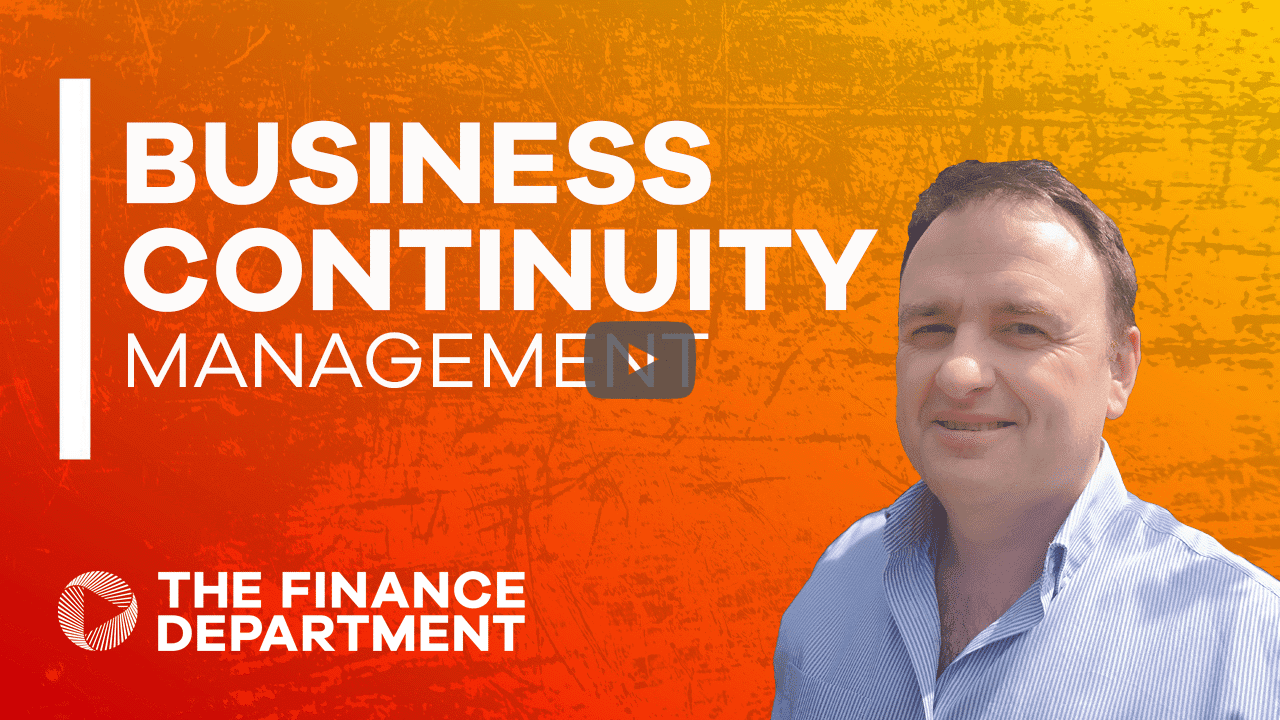Join today and start learning
TFD is the learning platform built for finance professionals.
This content is available as part of our bitesized video series.
Watch this video today by joining our free community.
Video : How do employee share option schemes work?
In this video, Ian provides us with an introduction to how employee share option schemes work, in particular, Enterprise Management Incentive ‘EMI’ schemes. For Finance Teams, this will be a useful primer if you are considering setting up a scheme for your company. He covers:
– When can they be used?
– What they are? What are the benefits?
– How they work?
– What are the criteria?
– What are the compliance requirements after you’ve set one up?
So, you need to compete with Amazon and Google for hiring the best talent. How do you do that? Well one thing that can really help you is using your company’s equity. One of the greatest schemes that you can do this under is an EMI scheme.
EMI schemes are for employees, who work 25 hours a week or 75% of their working time for your company. The founders typically won’t qualify because they’ll have what’s called a material interest, which is basically a 30% holding in the company.
These are only for employees, so they can’t be granted to advisors, non-executive directors or consultants, but we can give them something else. There are a number of compliance requirements. HMRC have made this quite complicated, but we’re here to guide you through them.
Typically your grant and EMI options to somebody, are under your plan by giving them an option agreement, which will be signed by the company and by the individual. and then dated, and those options will need to be reported to HMRC within 92 days of the date they’re granted. Please don’t miss this deadline, or they won’t be EMI.
There are also other compliance and reporting requirements, which your lawyers and accountants can advise you. Typically then, the option will vest over four years with what we call a 25% cliff or one year cliff. And this means that if you leave in the first year, for either option, you generally won’t have any vesting, so you won’t get to keep your option or exercise it to any extent.
Once you’ve been there a year since the date of grant, then 25 percent of the shares will vest. Typically, they then vest on a monthly basis as to 136 of the total shares under option. Now, if you’ve adopted the US approach that sort of Silicon Valley approach. You’ll be able to exercise your option as and when it vests. You don’t have to do so, it’s your own choice. You’d be paying the exercise price, but if you’ve granted your option with an exercise price, at least equal to the actual market value of the share, there should be no tax today on exercise.
If by contrast your option is not an EMI option or one of the other tax-advantaged options, then there’ll be income tax and National Insurance contributions potentially on any gain that you make. Some schemes provide that you can only exercise on an exit generally, a flotation of the company on the stock exchange known as an IPO or a listing or a takeover of the company by another company.
Those are perhaps more European or UK, but we’re practicing move, I think the direction of travel, towards options which can be exercised at any time. If you leave, you will typically lose your option, if you’re what’s called a bad leaver and get to either exercise your option within a short period after leaving or retain your option until a negative, if it’s what we call an exit only scheme.
Typically, options are granted perhaps every six months or every year. And option promised letters are used in the interim and this is because while you don’t have to agree, the market value with HMRC, it’s a very good idea to, because then you have certainty as to the tax treatment.
We already touched on the fact that if you grant an option, the EMI option with an exercise price which is at least equal to the actual market value of the shares, that’s at the date of grant, then when you come to exercise it, there should be no tax at all to pay on exercise.
You can grant EMI options at a discount. So if your actual market value is a pound on the date of grant and you run the options with an exercise price of 10 pence, you’ve granted them to 90 pence discount and when you come to exercise, you’ll have income tax and potentially National Insurance contributions on that 90 pence discount.
Any gain then over the value of the actual market value, as of the date of grant up until the day you exercise the option, that won’t be taxed until you actually come to sell the shares. And when you do come to sell the shares, that will all be capital gains tax. Currently, that’s at a rate of 20%. Now, if you’ve held the option for two years or the date of grant of the option is two years before the date you sell the shares.
So perhaps you’ve held the option for a year and then you’ve held the shares for a year. That at the moment entitles you to entrepreneurs relief, which is a rate of capital gains tax at 10% rather than 20%. So, very much work having and very generous. So, we’ve seen how important it is to establish the actual market value of the shares on the date of grant. That’s the value that you or I will transfer a share to ensure that.
There’s also a concept of unrestricted market value. And that’s the value, ignoring any restrictions to which the shares’ the subject, usually set out in the articles and those would be things like leaver provisions, co-sale rights, or restrictions on transfer of the shares. And ignoring those, you come to a higher value which will be the owners to its market value and that’s important because there are limits on the value as at the date of grant of the EMI options, £250,000 per person and three million for a company.
This is where having a good valuer comes in. They’ll be able to establish the actual market value, and the unrestricted market value of the shares as of the date of grant and they will write to HMRC on your behalf, and seek their agreement to that valuation.
Once you’ve got that, HMRC generally say that their agreement will be valid for 90 days or during COVID’s pandemic, 120 days. So companies generally grant options in batches perhaps every six months or every year. So they’re not having to write to HMRC all the time.
During the interim, they might do something like option promise letters, which essentially say that if you’re still an employee of the company when we come to the next grant window, then we’ll grant you an EMI option.
Ian advises both public and private companies on the design, implementation and operation of the full range of share-based incentive plans, in particular tax-favoured arrangements.
Ian also advises on the share schemes aspects of IPOs and a broad range of international M&A transactions. He has considerable experience in relation to employee benefit trusts and of advising senior executives on the impact on their awards of changing employer.
Video: How do employee share option schemes work?
In this video, Ian provides us with an introduction to how employee share option schemes work, in particular, Enterprise Management Incentive ‘EMI’ schemes. For Finance Teams, this will be a useful primer if you are considering setting up a scheme for your company. He covers:
– When can they be used?
– What they are? What are the benefits?
– How they work?
– What are the criteria?
– What are the compliance requirements after you’ve set one up?
So, you need to compete with Amazon and Google for hiring the best talent. How do you do that? Well one thing that can really help you is using your company’s equity. One of the greatest schemes that you can do this under is an EMI scheme.
EMI schemes are for employees, who work 25 hours a week or 75% of their working time for your company. The founders typically won’t qualify because they’ll have what’s called a material interest, which is basically a 30% holding in the company.
These are only for employees, so they can’t be granted to advisors, non-executive directors or consultants, but we can give them something else. There are a number of compliance requirements. HMRC have made this quite complicated, but we’re here to guide you through them.
Typically your grant and EMI options to somebody, are under your plan by giving them an option agreement, which will be signed by the company and by the individual. and then dated, and those options will need to be reported to HMRC within 92 days of the date they’re granted. Please don’t miss this deadline, or they won’t be EMI.
There are also other compliance and reporting requirements, which your lawyers and accountants can advise you. Typically then, the option will vest over four years with what we call a 25% cliff or one year cliff. And this means that if you leave in the first year, for either option, you generally won’t have any vesting, so you won’t get to keep your option or exercise it to any extent.
Once you’ve been there a year since the date of grant, then 25 percent of the shares will vest. Typically, they then vest on a monthly basis as to 136 of the total shares under option. Now, if you’ve adopted the US approach that sort of Silicon Valley approach. You’ll be able to exercise your option as and when it vests. You don’t have to do so, it’s your own choice. You’d be paying the exercise price, but if you’ve granted your option with an exercise price, at least equal to the actual market value of the share, there should be no tax today on exercise.
If by contrast your option is not an EMI option or one of the other tax-advantaged options, then there’ll be income tax and National Insurance contributions potentially on any gain that you make. Some schemes provide that you can only exercise on an exit generally, a flotation of the company on the stock exchange known as an IPO or a listing or a takeover of the company by another company.
Those are perhaps more European or UK, but we’re practicing move, I think the direction of travel, towards options which can be exercised at any time. If you leave, you will typically lose your option, if you’re what’s called a bad leaver and get to either exercise your option within a short period after leaving or retain your option until a negative, if it’s what we call an exit only scheme.
Typically, options are granted perhaps every six months or every year. And option promised letters are used in the interim and this is because while you don’t have to agree, the market value with HMRC, it’s a very good idea to, because then you have certainty as to the tax treatment.
We already touched on the fact that if you grant an option, the EMI option with an exercise price which is at least equal to the actual market value of the shares, that’s at the date of grant, then when you come to exercise it, there should be no tax at all to pay on exercise.
You can grant EMI options at a discount. So if your actual market value is a pound on the date of grant and you run the options with an exercise price of 10 pence, you’ve granted them to 90 pence discount and when you come to exercise, you’ll have income tax and potentially National Insurance contributions on that 90 pence discount.
Any gain then over the value of the actual market value, as of the date of grant up until the day you exercise the option, that won’t be taxed until you actually come to sell the shares. And when you do come to sell the shares, that will all be capital gains tax. Currently, that’s at a rate of 20%. Now, if you’ve held the option for two years or the date of grant of the option is two years before the date you sell the shares.
So perhaps you’ve held the option for a year and then you’ve held the shares for a year. That at the moment entitles you to entrepreneurs relief, which is a rate of capital gains tax at 10% rather than 20%. So, very much work having and very generous. So, we’ve seen how important it is to establish the actual market value of the shares on the date of grant. That’s the value that you or I will transfer a share to ensure that.
There’s also a concept of unrestricted market value. And that’s the value, ignoring any restrictions to which the shares’ the subject, usually set out in the articles and those would be things like leaver provisions, co-sale rights, or restrictions on transfer of the shares. And ignoring those, you come to a higher value which will be the owners to its market value and that’s important because there are limits on the value as at the date of grant of the EMI options, £250,000 per person and three million for a company.
This is where having a good valuer comes in. They’ll be able to establish the actual market value, and the unrestricted market value of the shares as of the date of grant and they will write to HMRC on your behalf, and seek their agreement to that valuation.
Once you’ve got that, HMRC generally say that their agreement will be valid for 90 days or during COVID’s pandemic, 120 days. So companies generally grant options in batches perhaps every six months or every year. So they’re not having to write to HMRC all the time.
During the interim, they might do something like option promise letters, which essentially say that if you’re still an employee of the company when we come to the next grant window, then we’ll grant you an EMI option.
Ian advises both public and private companies on the design, implementation and operation of the full range of share-based incentive plans, in particular tax-favoured arrangements.
Ian also advises on the share schemes aspects of IPOs and a broad range of international M&A transactions. He has considerable experience in relation to employee benefit trusts and of advising senior executives on the impact on their awards of changing employer.










